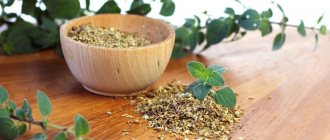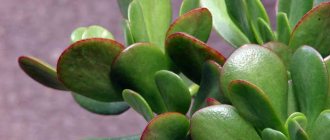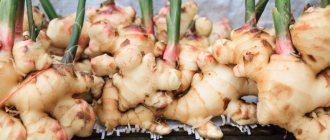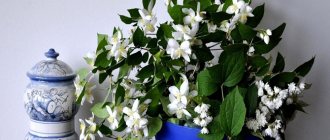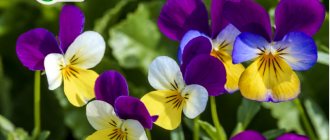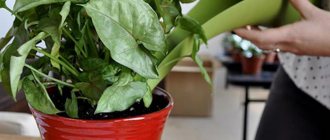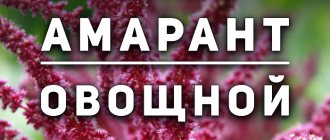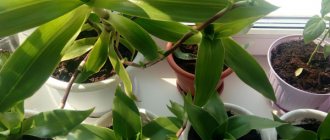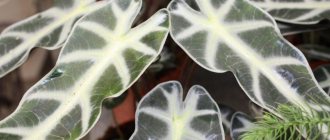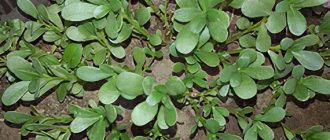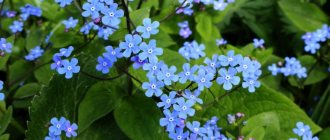Herbal treatment has been around for a very long time and has been successfully used for the recovery of a sick person. Our ancestors walked through the forests in search of valuable plants, collected and made various tinctures and hot decoctions from them.
Let's take a closer look at the world of plants and learn more about the Lyubka bifolia plant.
Description of the plant
This is a herbaceous plant, quite common in our area. Its stem is thick and tall, its length can reach from 45 to 50 centimeters.
The plant has extremely strong roots, thanks to which it burrows deep into the ground and is not afraid of the vagaries of the weather.
The leaves are oblong, green, 10-20 centimeters long, depending on the area in which it grows.
The main difference between the flower and all others is its strong, specific smell, which can be smelled at a distance of 1-2 meters.
The flower emits a particularly pronounced smell in rainy weather and at night.
It is interesting to know that this plant is also called “Lubka bifolia nocturna” because of its ability to smell strongly at night.
Planting and caring for night violet
Growing two-leaf violet from seeds at home is not so easy. The fact is that they germinate slowly - for 2-3 years they may not sprout at all, “ripening” in the soil. Flowering, even with proper care, will begin only 6-8 years after germination. Another limitation is that mushrooms (mycelium, spores) must be present in the soil.
Terms and conditions of cultivation
You can try planting the seeds in open ground or as seedlings. In the first case, the dates fall at the end of April, and if grown at home, you can sow at the beginning of March.
Lyubka bifolia can be planted in partial shade
It is very important to take “wild” forest soil and not disinfect it in any way. It is this soil that contains the mushrooms necessary for seed germination. It is optimal to go into the forest and, at the same time as collecting seeds, prepare and take the soil.
When growing Lyubka bifolia in the garden, it is important to provide good conditions. Then the plant will be healthy, and the flowering will be beautiful and long-lasting. The basic rules are:
- the soil is loose and fertile (although the flower also grows in depleted soils);
- shaded place (can be in the shade of trees or tall bushes);
- there is no stagnation of water (it is better not to place it in lowlands).
How to plant correctly
Seeds should be planted at a shallow depth (1-2 cm). You can make furrows in advance at a distance of 5 cm from each other. A similar scheme is used when growing at home using seedlings. After planting, the soil is moistened with a sprayer. Covering with film and creating other conditions for seedlings is not necessary, since seedlings will have to wait 2-3 years.
How to transplant Lyubka bifolia into the garden
Transplantation of seedlings is carried out in the third year. It is best to do this in mid-May, when there will definitely be no return frosts. The grass is not spreading, so the distance between holes can be left 20-30 cm.
Gardeners also practice transplanting already grown plants from the nursery to the garden. In this case, you should proceed as follows:
- Prepare the area in advance and, if necessary, fertilize it with humus or compost.
- Water the seedling from the nursery generously.
- Mark shallow planting holes.
- Two days after watering, knock on the walls of the pot and gently shake the seedling, trying to preserve the earthen lump as much as possible.
- Plant in the hole, add fertile soil and water a little.
Is it possible to plant Lyubka bifolia in a pot?
Night violet is practically not grown in pots. It grows poorly at home for several reasons:
- needs open areas with constant air flow;
- there should be a clear seasonality with transitions from summer to winter;
- a special soil composition is required to contain mushrooms (this is especially important at the stage of growing seeds).
Night violet is grown only in open ground
Aftercare
To get a beautiful bifolia with attractive flowers, as in the photo and in the description, you need to follow a few simple rules:
- If it rains periodically in the summer, additional watering may not be given. In hot weather, water weekly.
- Periodically, the soil is loosened and weeded.
- If the soil is fertile, feeding the plant is not necessary. If the soil is depleted, complex mineral fertilizer is applied in the spring and during the formation of buds.
- Otherwise, care is very simple - no pruning or replanting is required. However, in late autumn you can mulch the root zone. For this purpose, sawdust, hay, pine needles, and dry leaves are used.
Diseases and pests
The two-leaved lyubka is unpretentious, so it does not require special care, and does not suffer from diseases either. Only with excessive watering are fungal infections possible. In this case, treatment is carried out with “Fundazol”, “Skor”, “Bordeaux mixture” or other fungicides.
Sometimes there may be an infestation of aphids and other insects. In this case, 1-2 treatments with insecticides are carried out. Such drugs as “Decis”, “Karate”, “Aktara”, “Fufanon”, “Fitoverm” and many others are effective.
Spreading
The plant grows mainly in European countries, but there is also a lot of it in our area. Residents of the Caucasus, the Far East and central Russia can see Lyubka on the edges of forests and plantings.
According to rough estimates by botanists, the largest quantities of this flower grow in countries such as:
- Poland
- Lithuania
- Latvia
- Croatia
- Bulgaria
- Estonia
Beneficial features
Based on laboratory studies, the biologist was able to find out its composition and beneficial properties. The plant contains:
- Potassium, magnesium, zinc
- Small amount of echinacea
- Vitamin C
- Aldehydes
With the help of Lyuba bifolia, ENT diseases, stool and digestive disorders, extensive furunculosis on the face and body, and severe toothache are effectively treated.
The juice of the flower is a strong anti-inflammatory agent that completely removes the source of inflammation within a few hours.
In pharmacology, tinctures are made from the juice and added to wound healing ointments. For a detailed study, we advise you to view the photo of Lyubka bifolia.Lyubka red
Lyubka bifolia red is a variety of Lyubka bifolia. It grows in forests with a predominantly cold climate.
Its tubers are very valuable in the treatment of acute respiratory viral infections. They strengthen the immune system and prevent viruses from entering the human body.
The plant has many names in scientific nomenclature: cuckoo, night violet, wild balsam and others. Previously, it could be found quite often outside the city, and sometimes in the city itself.
White sandman - medicinal properties, uses and recipes from traditional medicine (video + 90 photos)Dubrovnik - beneficial properties of the plant and tips on collecting and choosing herbs (95 photos and videos)
- Smoker officinalis - recipes, use in folk medicine, description of the properties and medicinal qualities of the plant (110 photos)
But the unfavorable climatic situation took its toll. Now you can see the plant only in the central part of Russia, in the forests.
Lyubka bifolia red has recently been listed in the Red Book and is protected by the current law of Russia.
The closest relative of the flower is the violet lyubka bifolia; their only difference is the size and the cold climate that the plant loves.
Preparing a healthy decoction
To make a medicinal decoction against insomnia and headaches, you will need 10 tablespoons of crushed Lyubka bifolia and 5-6 glasses of clean water.
Add the powder to water and boil it for 30-35 minutes, then filter the tincture through a sieve and let it stand for 2 days.
Afterwards you will get a wonderful, tonic decoction that will help get rid of nighttime insomnia and headaches.
Folk recipes
Inflammation of the bladder, cystitis
Two teaspoons of Lyubka bifolia root, crushed to a fine powder, are brewed with a glass of boiled milk, shaken until a thick liquid is obtained. Take up to two tablespoons three times a day. Lyubka jelly helps against bronchitis, treats sore eyes, and glomerulonephritis.
Stomach upset
For diarrhea, a simple folk remedy is prepared from the roots of Lyubka bifolia. Brew a teaspoon of root powder with a glass of boiling water, and strain it after a quarter of an hour. You need to drink it immediately, while the remedy is warm. If the condition does not improve, the treatment is repeated.
Prostatitis
One hundred grams of Lyubka bifolia flowers are poured with a liter of olive oil, left for 14 days in a room without access to light, then filtered. Mix a teaspoon of the finished product with 50 ml of boiled water and beat until a foamy emulsion is obtained. For fifteen days, a warm emulsion is injected into the rectum in the evening. At the same time, take medications prescribed by your doctor.
You may also be interested in: Fireweed Ivan tea
Abscesses, boils
Steamed powder from the roots or boiled in milk is applied several times a day to problem areas.
Healing porridge
For half a liter of milk, 20g of flour from medicinal roots is enough. When the milk boils, slowly add the powder and stir over the fire until a thick mass is obtained. This is the norm for a child. If treating an adult, the dose is doubled. Porridge helps restore strength and speed up recovery after a serious illness. The treatment will of course be long, but will definitely bring positive results.
Where can I buy?
If you are interested in where to buy Lyubka bifolia, then the best way to do this is via the Internet.
Common goldenrod - healing properties, medicinal qualities, indications and contraindications for the use of goldenrod (120 photos)- Jaundice - description of the plant, medicinal properties and features of use in folk medicine (80 photos)
- Field thistle - medicinal properties, recipes, uses and contraindications of thistle (video + photo)
By typing the corresponding query in the search, you will get many sites where people sell the collected plant at an adequate price. You can place an order and later receive the goods at your post office.
Collection and storage of medicinal raw materials
It doesn’t matter where Lyubka bifolia grows, collecting it in places of natural growth is prohibited. Therefore, for industrial production, it is grown in special nurseries, which are organized at the bases of nature reserves.
But if you wish, you can grow it yourself on your own site. Plant seeds are sold in the same nurseries or specialized stores.
They are selected from the ground, washed in running water, cleaned, and then dipped in boiling water for a couple of minutes.
After this, the workpieces must be dried: in special cabinets or in dark, ventilated places. If a drying chamber is used, its temperature should be set to 50-60°C.
After drying, the tubers become horn-shaped and very hard. They should be placed in paper bags, placed in storage containers and tightly closed. The container is placed in a dry place. If moisture penetrates the tubers, they may become moldy.
Photo of Lyubka bifolia
Read here! Cocklebur - medicinal properties, indications and contraindications for use. 135 photos of the plant and video of its use in folk medicine
Please repost
0
Chemical composition
Orchid is used for medicinal purposes
Tubers contain a significant amount of mucus (about 50%), which contains the plant polysaccharide mannan. Starch content - up to 27%. The remainder is occupied by sugar, protein components, mineral salts, essential oils, calcium oxalate and bitter substances.
